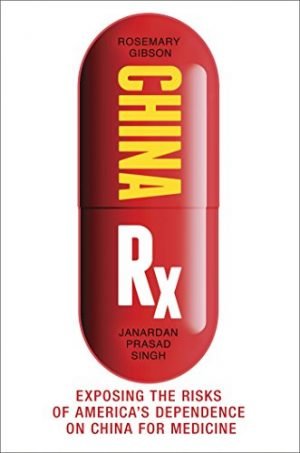By Robbin Laird and Ed Timperlake
The United States and a number of key allies have begun to focus significant attention on reworking the supply chain in key industries associated with imports from China.
As Dr. Harald Malmgren recently noted: “Much new industrial thinking is under way how the next phase of manufacturing should be structured.
“In this process of reconfiguration US officials are advising companies to seek complex products with high information technology components that have no Chinese content…the economic cold war with China is sparking an entirely new kind of surge in demand for “zero Chinese content.”
In her recent book, China Rx: Exposing the Risks of America’s Dependence on China for Medicine, and recent testimony before the U.S. China Commission presented on July 31, 2019, Rosemary Gibson focused on one such industry, which needs a serious rethink in terms of supply, namely, the pharmaceutical industry.
This is especially true with regard to generic drugs which are 90 percent of the medicines Americans take.
Her testimony has focused largely on the United States but much of what she has documented in her recent book with Janardan Prasad Singh also applies to our allies as well.
We had a chance to discuss the subject with Ms. Gibson prior to her testimony on the Hill.
In our discussion with her, she clearly focused on China’s strategy that she documented for this sector, which follows the playbook of predatory trade practices common in other strategic industries.
China undercuts Western producers on price as a deliberate strategy for global domination.
China RX Rosemary Gibson Testimony from SldInfo.com on Vimeo.
But she clearly underscored that China could not do it by itself.
“It’s not just China, though.
“We have to look in the mirror and understand how is it that we’ve lost our industrial base.
“Companies here in the US, Fortune 100 companies, have been sourcing medicines from Chinese manufacturers to increase their margins and profitability.”
“We have considered aircraft carriers and nuclear submarines as off limits to outsourcing.
“And we pay more for that because we can understand that that’s essential to our security.
“The same thinking needs to be applied to generic antibiotics and other medicines essential for life.”
She underscored that even though the issue of drug manufacturing and supplies is obviously a critical national security issue, it is not dealt with as such. She recommends a whole of government review to assess vulnerabilities in the industrial based and recommend options to strengthen it, broadly similar to what the DOD is doing with regard to the defense industrial base.
She noted, “It’s no one’s job in the U.S. federal government to know who controls the supply of our medicines.”
That needs to change.
“We need to consider our medicines as a strategic asset, as we do for oil and other energy supplies and food commodities.”
In effect, what the U.S. and the allies have experienced is what one might called distorted globalization driven by the Chinese and supported by industrial strategies which assume that lower price global sourcing is the goal, rather than taking into account that the world is not just one big happy marketplace, but is an arena where great powers compete with economic as well as military instruments.
Much like Dr. Malmgren underscored a shift in thinking with regard to new manufacturing approaches associated with rethinking the over engagement in China Inc., Gibson highlighted new approaches which can be tapped in the United States and in the liberal democracies to do so with regard to pharmaceutical manufacturing.
She argued that new approaches are at hand to be able to generate significant stockpiles of the core ingredients regarded for core generic drugs.
And as Dr. Malmgren has highlighted in his recent work on advanced manufacturing, the new technologies allow for much shorter supply chains to generate core capabilities, rather than having to have very long global supply chains.
Clearly, pharmaceutical manufacturing is such an industry.
We finally discussed how the African swine fever epidemic is devastating China’s pig population.
And it turns out that pig intestines are the source of a raw material for a medicine, heparin, a blood thinner, that is used ubiquitously in hospitals—and China is the source of 80 percent of the global supply.
Without this medicine, hospitals would cease to function.
Thus, pig intestines can be considered the “rare earths” of medical care.
See also the following:
The New Warfare: Rethinking the Industrial Base for National Defense and Security


